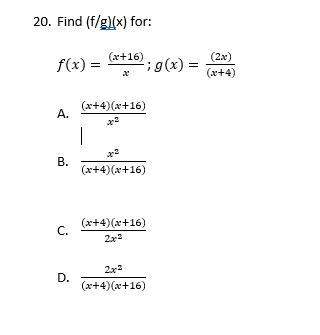
Mathematics, 19.09.2019 23:20 fordenboer
Eastville has a population of 32,000 and is gaining 500 people per year. lakeside has a population of 45,000 and is losing 1,000 people per year. when will eastville have the same number of people as lakeside

Answers: 1


Other questions on the subject: Mathematics

Mathematics, 21.06.2019 15:30, megancrader11
Will mark brainliest if you answer ! the taco shop sold 198 lunches friday. this number is 3 more than 3 times the number they sold monday. let n represent the number of lunches sold monday. which equation shows an equality between two different ways of expressing the number of lunches sold on friday? a. n – 3 = 198 b. 3n – 3 = 198 c. 3n + 3 = 198 d. n + 3 = 198
Answers: 1

Mathematics, 21.06.2019 16:10, deannabrown2293
The box plot shows the number of raisins found in sample boxes from brand c and from brand d. each box weighs the same. what could you infer by comparing the range of the data for each brand? a) a box of raisins from either brand has about 28 raisins. b) the number of raisins in boxes from brand c varies more than boxes from brand d. c) the number of raisins in boxes from brand d varies more than boxes from brand c. d) the number of raisins in boxes from either brand varies about the same.
Answers: 2

Mathematics, 21.06.2019 17:00, uuuugggghhhh2463
At the beginning of the day, stock xyz opened at $6.12. at the end of the day, it closed at $6.88. what is the rate of change of stock xyz? a. 1.17% b. 11.0% c. 12.4% d. 81.5%
Answers: 1

Mathematics, 21.06.2019 21:30, gonzalezashley152
In a test for esp (extrasensory perception), the experimenter looks at cards that are hidden from the subject. each card contains either a star, a circle, a wave, a cross or a square.(five shapes) as the experimenter looks at each of 20 cards in turn, the subject names the shape on the card. when the esp study described above discovers a subject whose performance appears to be better than guessing, the study continues at greater length. the experimenter looks at many cards bearing one of five shapes (star, square, circle, wave, and cross) in an order determined by random numbers. the subject cannot see the experimenter as he looks at each card in turn, in order to avoid any possible nonverbal clues. the answers of a subject who does not have esp should be independent observations, each with probability 1/5 of success. we record 1000 attempts. which of the following assumptions must be met in order to solve this problem? it's reasonable to assume normality 0.8(1000), 0.2(1000)%30 approximately normal 0.8(1000), 0.2(1000)% 10 approximately normal srs it is reasonable to assume the total number of cards is over 10,000 it is reasonable to assume the total number of cards is over 1000
Answers: 1
You know the right answer?
Eastville has a population of 32,000 and is gaining 500 people per year. lakeside has a population o...
Questions in other subjects:













